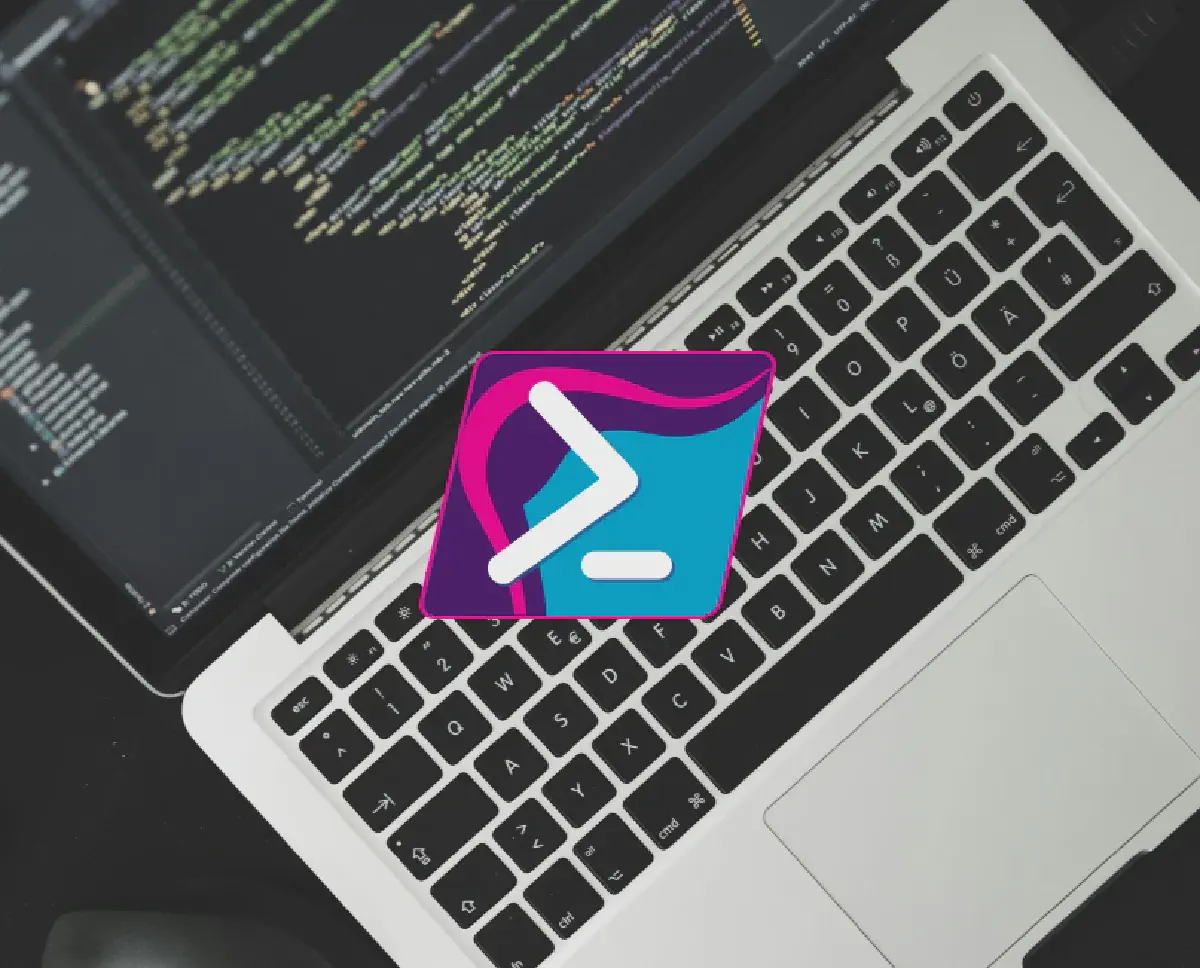A PowerShell Module is basically a collection of functions and other resources that are packaged for reuse and distribution. If you’re familiar with other languages, think of it like a Node.js package or a Python module.
There are two types of modules in PowerShell:
- Script Modules: These are
.psm1files that contain raw PowerShell code. They can be as simple as a single file or a collection of files in a directory. - Binary Modules: These are compiled C# code in
.dllfiles.
In this post, I’ll be focusing on Script Modules, but you can also mix and match both types in a single module.
Basic Concepts #
The following are basic concepts you’ll need to understand when creating a PowerShell module.
Module Locations #
PowerShell modules can be stored anywhere on your filesystem. The directories where PowerShell looks for modules by default are defined in the $env:PSModulePath environment variable. You can view the current module paths by running:
$env:PSModulePath -split ';'
When PowerShell Modules are installed via Install-Module, they are typically placed in one of those directories.
The locations included by default depend on your PowerShell version and OS, but you can also add custom paths to this variable by modifying it in your PS Profile or adding paths to the variable mid session.
- Read more on Default Module Locations
Import vs Install Module #
When you want to use a module, you can either import it or install it. Installing a module means downloading it from a NuGet repository like the PowerShell Gallery, while importing a module means loading it into your current PowerShell session.
To install a module from the PowerShell Gallery, you can use the Install-Module cmdlet:
Install-Module MyModule
# OR
Install-Module -Name MyModule -Scope CurrentUser
# OR
Install-Module -Name MyModule -Repository MyPersonalRepo
When you Install a module it does 2 things:
- Downloads the module files to one of the directories in
$env:PSModulePath(depending on the-Scopeparameter). - Imports the module into your current session automatically.
To import a module, you can use the Import-Module cmdlet:
Import-Module MyModule
# OR
Import-Module .\MyModule.psm1
# OR
Import-Module C:\Path\To\MyModuleFolder
As you can see from the above, you can import a module from either a .psm1 module script file, a folder (containing a psd1 manifest file), or directly by name if it’s already installed in a $env:PSModulePath directory.
During testing, you might want to import a module from a specific folder or the module script file.
MyModule, the manifest file should be named MyModule.psd1 and the module file should be named MyModule.psm1.
Manifest Files #
Manifest files are stored in a PowerShell Data file (.psd1) and used to define metadata about your module, including the module name, version, author, description, etc. They also allow you to specify dependencies and other environment requirements.
It should be noted that the manifest file is actually optional as modules only really require a .psm1 file, but a manifest file is always required when publishing to PSGallery and enables you to organise your module in a more structured manner.
You can quickly generate a manifest file using the inbuilt New-ModuleManifest cmdlet:
New-ModuleManifest -Path .\MyModule.psd1 -RootModule MyModule.psm1
You can also define the basic set of metadata in this cmdlet, but it’s far easier to edit the file directly after creation if you’re not using a script or other means of automation to generate it depending on your workflow.
You can always use the Test-ModuleManifest to validate the manifest file, and Update-ModuleManifest to update it with new metadata or exported functions/aliases.
- Read more on Module Manifest Files
Getting Started #
File Structure #
When creating a PowerShell module, it’s best to maintain some form of structure, as it’s not always feasible to store everything in a single .psm1 file, especially as a module grows in complexity.
In this post, I’ll be using a common structure that separates public and private functions, as well as classes. This structure isn’t a requirement, and you can alter it to suit your own needs.
In terms of PowerShell Modules, Public functions are those that you want to expose to users of your module (using Export-ModuleMember), while private functions are internal helper functions and not meant to be used outside the module itself.
You can also just create a single .psm1 file without any subfolders if you prefer everything in one file but makes maintenance harder as/if your module grows.
The resulting structure would look like this:
MyModule
├── MyModule.psm1
├── MyModule.psd1
├── Public
│ └── __.ps1
├── Private
│ └── __.ps1
└── Classes
└── __.ps1
If you’re working inside a Git repository, always create a subfolder for your module, otherwise when sharing it will include unnecessary items and will bloat your module. You also can’t guarantee that the folder name will match the module name, which is a requirement for importing modules by folder.
Initial Setup #
To create your initial module, start off with a Manifest file and a .psm1 file. You can use the following commands to get started:
$ModuleName = "MyModule"
# Create a Module File
New-Item -Path ".\$ModuleName\$ModuleName.psm1" -ItemType File -Force
# Create a Manifest File
New-ModuleManifest -Path ".\$ModuleName\$ModuleName.psd1" -RootModule "$ModuleName.psm1" -Author "Your Name" -Description "A brief description of your module"
# Create folder structure
New-Item -Path .\$ModuleName\Public -ItemType Directory
New-Item -Path .\$ModuleName\Private -ItemType Directory
New-Item -Path .\$ModuleName\Classes -ItemType Directory
Initial Module File #
Module files are executed as is, like a normal script when Imported, so we can utilise this logic to tell PowerShell to find our public and private functions.
Export-ModuleMember at the end of your .psm1 module file.
If you’re using a private/public style folder structure, you could use my following code to import all public and private functions from their respective folders:
# MyModule\MyModule.psm1
[string]$Root = (Get-Item -Path $PSScriptRoot -Force)
[string]$ModuleName = "MyModule"
# paths
$ManifestPath = Join-Path $Root "$ModuleName.psd1"
$PublicPath = Join-Path $Root "public"
$PrivatePath = Join-Path $Root "private"
$ClassesPath = Join-Path $Root "classes"
$Manifest = Test-ModuleManifest $ManifestPath -ErrorAction Stop
# get all files for import/export
$aliases = @()
$public = Get-ChildItem -Path $PublicPath -Recurse -Force | Where-Object { $_.Extension -eq ".ps1" }
$private = Get-ChildItem -Path $PrivatePath -Recurse -Force | Where-Object { $_.Extension -eq ".ps1" }
$classes = Get-ChildItem -Path $ClassesPath -Recurse -Force | Where-Object { $_.Extension -eq ".ps1" }
# Import all to session
$public | ForEach-Object { . $_.FullName }
$private | ForEach-Object { . $_.FullName }
$classes | ForEach-Object { . $_.FullName }
# Export 'public' functions (w/ aliases if present)
$public | ForEach-Object {
$alias = Get-Alias -Definition $_.BaseName -ErrorAction SilentlyContinue
if ($alias) {
# Export defined aliases
$aliases += $alias
Export-ModuleMember -Function $_.BaseName -Alias $alias
} else {
# Export with no alias
Export-ModuleMember -Function $_.BaseName
}
}
# Update the module manifest on changes
$Added = $public | Where-Object {$_.BaseName -notin $Manifest.ExportedFunctions.Keys}
$Removed = $Manifest.ExportedFunctions.Keys | Where-Object {$_ -notin $public.BaseName}
$aliasesAdded = $aliases | Where-Object {$_ -notin $Manifest.ExportedAliases.Keys}
$aliasesRemoved = $Manifest.ExportedAliases.Keys | Where-Object {$_ -notin $aliases}
if ($Added -or $Removed -or $aliasesAdded -or $aliasesRemoved) {
try {
$updateModuleManifestParams = @{}
$updateModuleManifestParams.Add("Path", $ManifestPath)
$updateModuleManifestParams.Add("ErrorAction", "Stop")
if ($aliasesAdded.Count -gt 0) { $updateModuleManifestParams.Add("AliasesToExport", $aliases) }
if ($Added.Count -gt 0) { $updateModuleManifestParams.Add("FunctionsToExport", $public.BaseName) }
Update-ModuleManifest @updateModuleManifestParams
}
catch {
$_ | Write-Error
}
}
All this code does is:
- Defines the root path of the module and the paths for public, private, and class files.
- Imports everything into the special module session.
- Exposes public functions and aliases into the active session by file name.
- Updates the module manifest with any changes to exported functions or aliases.
You may want to read more on exporting functions, setting aliases and writing classes.
Writing Functions #
If you’re using the code from Initial Module File, you can now create your functions in the Public folder and they will be automatically imported when the module is loaded. Just ensure that the file name matches the function name, as the script will Export-ModuleMember based on the file name.
# MyModule\Public\Use-PublicFunction.ps1
function Use-PublicFunction {
param ( [string]$Name )
Write-Output "Hello, $Name!"
}
You can now test your new function by importing the module (by directory):
Import-Module .\MyModule
Use-PublicFunction -Name "World"
# Output: Hello, World!
PowerShell will automatically find the module manifest, then will execute the .psm1 file. If you’re using my PSM1 script, it will also Export all public functions from the Public folder and update the manifest with any new/removed functions and aliases.
Using Private Functions #
If you want to create a private function to use inside any other functions, do the same thing but place the function in the Private folder instead. The script will automatically import it, but it won’t be available to users of the module:
# MyModule\Private\Get-World.ps1
function Get-World {
return "World"
}
Then use in your public functions:
function Use-PublicFunction {
param ( [string]$Name = (Get-World) )
Write-Output "Hello, $Name!"
}
# Output: Hello, World!
.psm1 file but it’s a good practice to keep them separate for clarity and maintainability.
Import-Module .\MyModule
Use-PublicFunction
# Output: Hello, World!
Get-World
# Output: Get-World : The term 'Get-World' is not recognized
Testing Your Module #
Apart from the literal basic testing of your module by importing it and running the functions, you should also use Pester to write unit tests for your module.
It’s a bit out of scope to go into detail here, but you can learn more from the Testing PowerShell with Pester Series and from the Pester Documentation
Essentially, you can test public functions by importing the module and calling the functions directly in your tests. But if you want to test private functions and basic classes, you’ll need to use an InModuleScope block to access them, assuming the module is imported.
# Tests\Use-PublicFunction.Tests.ps1
It "Should use the private Get-World function" {
InModuleScope MyModule {
Get-World | Should -Be "World"
}
}
It "Should Run Public Function with default" {
Use-PublicFunction | Should -Be "Hello, World!"
}
It "Should Run Public Function with parameter" {
Use-PublicFunction -Name "Foo" | Should -Be "Hello, Foo!"
}
Publishing Your Module #
Once you’re happy, you may want to publish your module to the PowerShell Gallery (or other compatible NuGet repositories).
To publish your module, you must ensure the following:
- Your module has a valid manifest file (
.psd1). - The manifest file has the required metadata filled out (like
ModuleVersion,Author,Description, etc.). - Everything is fully tested and working as expected.
When you’re ready, create an account on the PSGallery and obtain your API Key, you can then use the Publish-Module cmdlet to publish your module:
$params = @{
Path = '.\path\to\MyModule'
NuGetApiKey = '' # fill in with api key
LicenseUri = 'http://path.to/license.txt'
Tag = 'Foo', 'Bar', 'Baz'
ReleaseNote = 'Initial Release.'
Repository = 'PSGallery'
}
Publish-Module @params
- Read more on PSGallery Publishing Guidelines and Creating and Publishing Items
And that’s it! You’ve learned the basics of creating a PowerShell module: structuring, writing functions, and publishing it.
Whilst it’s far from the only way to go about things, this should give you a solid foundation to build upon, and mostly everything can be adapted or automated to suit your needs and workflow.
If you want to take it a step further, consider looking into:
- Using PSDepend to manage module dependencies
- Validating script files using PSScriptAnalyzer
- Writing comprehensive tests for your module using Pester and using Code Coverage
- Generating Helpfiles and Documentation with PlatyPS
- Automating Testing and Publishing using GitHub Actions or Azure DevOps
See the example module I created for this post:




